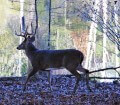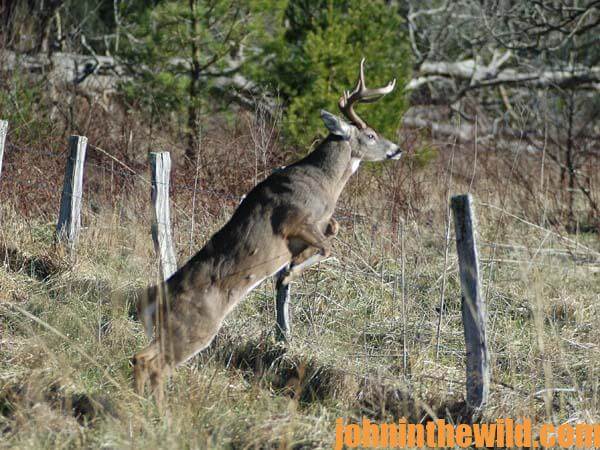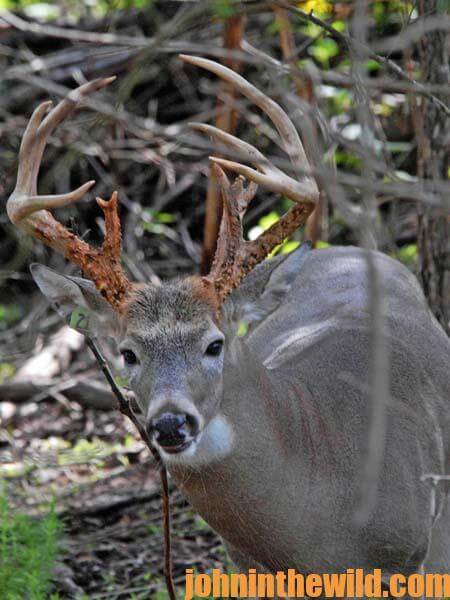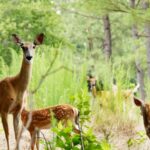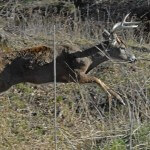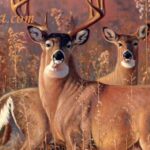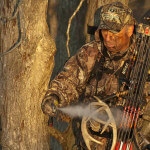John’s Note: Two ways of bagging a buck include luck, which is a factor that a majority of hunters in many areas depend on solely, and experience – knowing the deer, his movement patterns, his behavior patterns and what causes him to move from one place to another. Being able to predict deer movement is an important trait of the hunter who bags a buck year after year. Very-little guesswork is involved in this type of hunting. The sportsman takes a set of given facts, studies the terrain, the available food, the deer’s mating habits and the weather in his region, correlates them with deer sign he finds where he’s hunting and comes-up with a hunt plan that logically will put him in a position to see and hopefully bag a deer on any given day he hunts.
The buck deer’s movement patterns before the season starts are the patterns he’ll follow naturally when he’s not spooked and doesn’t have any hunting pressure exerted on him.
This type of scouting is primarily for the bowhunter and the blackpowder shooter and may hold true for the first one or two days of gun season. But when the woods are full of hunters, and deer are moving more from fright than for any-other reason, these patterns often don’t work.
“To have a buck to shoot an arrow at on opening morning of bow season, I begin to scout 4- to 6-weeks before the season begins,” Dr. Robert Sheppard, an avid student of deer behavior, explains. “If you start any sooner than that, the deer’s feeding patterns may change, and the food they’ve been depending on during the summer may not be the same food they’re relying on during bow season. Primarily early-season scouting is for deer moving toward or away from their feeding areas, unless the rut occurs at the beginning of bow season. If you don’t know what foods the deer are feeding on or should be feeding on during the first part of bow season, you can check with other hunters or the state conservation officer in your hunting area. In many regions of the country, one of the best places to find deer is around agricultural crops.
“For instance, on a cornfield that’s bordered by a wood lot, the easiest method for patterning deer in a cornfield is to walk the edge of the field and look for tracks. But just finding tracks on the edge of a cornfield isn’t enough evidence to justify setting-up a tree stand or taking a stand close to that set of tracks going into the field. To increase your chances of taking a deer, you need to pinpoint tracks going into and coming out of the field at the same point. That’s where the likelihood of catching a deer entering or leaving a field is the greatest. Deer generally will move through the same region day in and day out, but they also will meander through an area. If they’ve started from a different point to come into the field on a particular day, they may use the same point to go out from the field. Or, if they’ve come into the field from the place you’ve pre-determined, then they may meander out in another direction. But usually there will be one or two places along the edge of a field that deer prefer to use for entering the field.”
“New Research on Effects of Moon Phase” with Bob Sheppard: http://youtu.be/7vYcE-0tsVQ
You can learn about Dr. Sheppard’s new book at http://youtu.be/s1I8mEGZ4S4.
To learn more about deer hunting, you can get John E. Phillips’ Kindle eBooks, “How to Hunt and Take Big Buck Deer on Small Properties,” (John’s latest book), “How to Hunt Deer Up Close: With Bows, Rifles, Muzzleloaders and Crossbows,” “PhD Whitetails: How to Hunt and Take the Smartest Deer on Any Property,” “How to Take Monster Bucks,” and “How to Hunt Deer Like a Pro,” or to prepare venison, get “Deer & Fixings.” Click here to get these books.
Share this page with a friend!
About the Author
John Phillips, winner of the 2012 Homer Circle Fishing Award for outstanding fishing writer by the American Sportfishing Association (ASA) and the Professional Outdoor Media Association (POMA), the 2008 Crossbow Communicator of the year and the 2007 Legendary Communicator chosen for induction into the National Fresh Water Hall of Fame, is a freelance writer (over 6,000 magazine articles for about 100 magazines and several thousand newspaper columns published), magazine editor, photographer for print media as well as industry catalogues (over 25,000 photos published), lecturer, outdoor consultant, marketing consultant, book author and daily internet content provider with an overview of the outdoors. Click here for more information and a list of all the books available from John E. Phillips.


